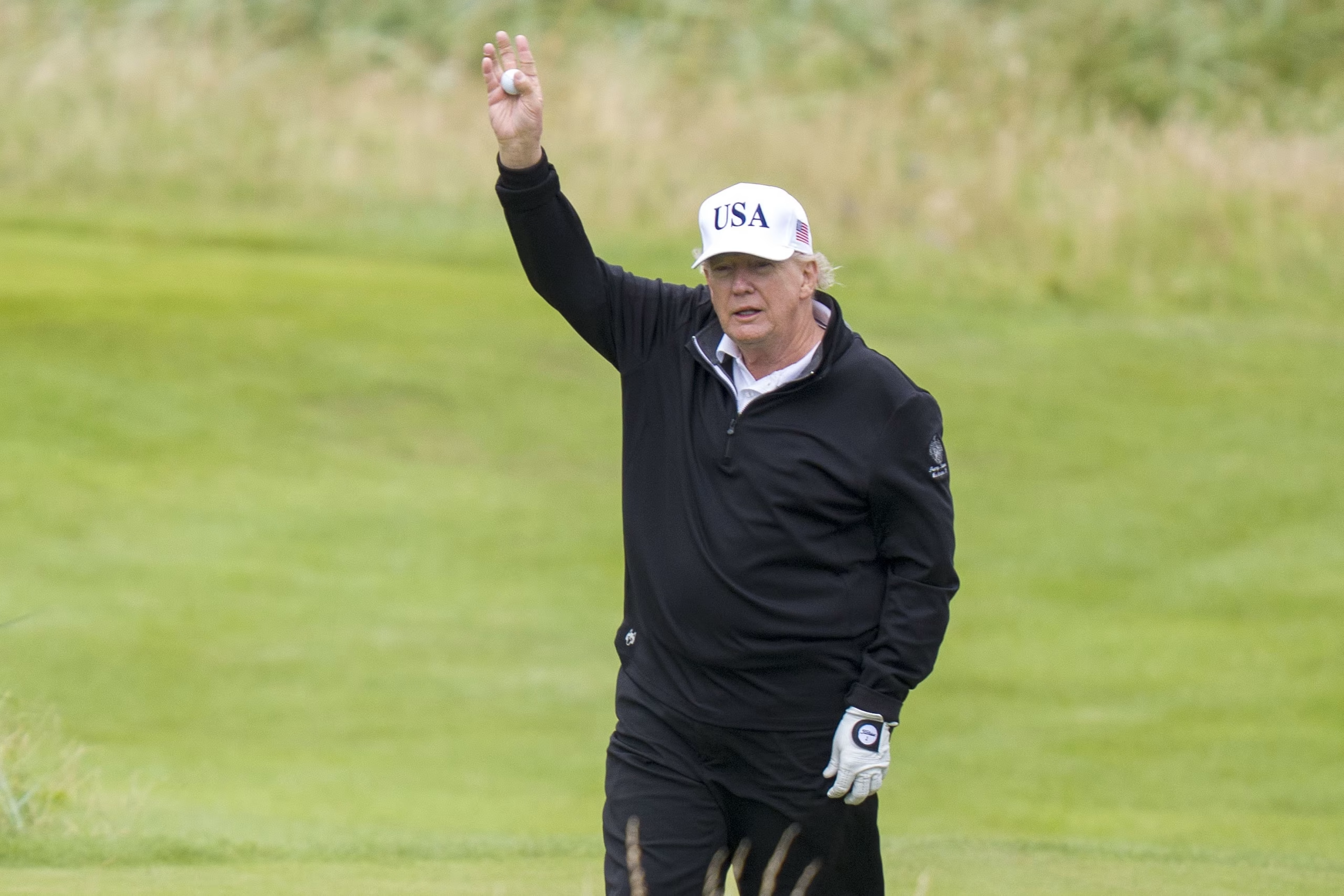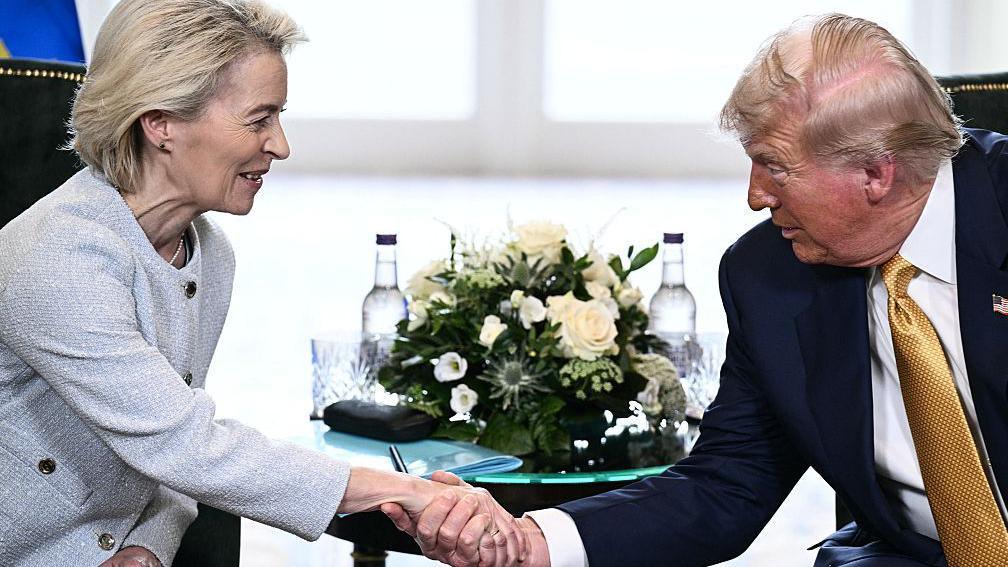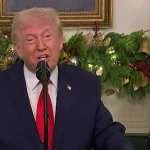Trump’s latest EU trade deal may have dodged disaster, but it slaps a costly 15% price tag on Europe—and risks turning allies into adversaries.
In a high-stakes meeting on July 27, 2025, at President Trump’s Turnberry golf resort in Scotland, U.S. President Donald Trump and European Commission President Ursula von der Leyen unveiled a landmark trade framework according to BBC News. The EU agreed to a 15% tariff on most of its exports to the U.S.—well below Trump’s threatened 30% rate, yet far above traditional levels—while securing zero tariffs on select strategic goods. The pact also includes major European investment pledges.
Key Elements of the Trade Framework
The agreement establishes a baseline 15% U.S. import duty on most EU exports, including autos, semiconductors, and pharmaceuticals—a significant reduction from the previously contemplated 30% or even 50% levies. However, the 50% U.S. tariff on steel and aluminium remains in place for now, with talks ongoing for a potential shift to a quota system.
In return, the EU committed to purchasing around $750 billion in U.S. energy (natural gas, oil, nuclear) over three years and to invest at least $600 billion in the American economy, including in military procurement.
A range of goods—including aircraft and parts, semiconductor equipment, certain chemicals, generic pharmaceuticals, some agricultural products, critical raw materials—received tariff exemptions under a “zero‑for‑zero” clause, though alcohol and wine remain unresolved.
Political Stakes and Business Reactions
Trump called the framework "the biggest deal ever made," framing it as a win for American economic and trade interests. von der Leyen described it as a stabilizing “framework” that brings predictability for businesses on both sides—while noting final technical details remain to be negotiated in the coming weeks according to The Washington Post.
Within the EU, reactions were sharply mixed. France's European Affairs Minister Benjamin Haddad criticized the accord as “unbalanced” despite some exemptions for French firms. Germany’s industry association (BDI) warned a 15% tariff is still too high for export-driven sectors, and Volkswagen reported a €1.3 billion profit hit in H1 2025 under current tariffs. Ireland also flagged complexities arising from differential tariffs depending on whether goods originate from EU‑Ireland or Northern Ireland under the UK‑U.S. deal.

President Trump at his Turnberry golf resort in South Ayrshire, Scotland, hours before announcing the landmark EU tariff agreement.
Behind the Headlines — Negotiation Context
This agreement extends a pattern similar to recent deals the U.S. has reached with Japan and the UK, combining new tariffs, investment pledges, and strategic exclusions but avoiding resolution of deeper regulatory issues—a hallmark of modern unilateral trade diplomacy according to Reuters.
EU internal divisions, particularly Germany prioritizing its auto industry, delayed stronger bloc-level resistance. Commission trade commissioner Maroš Šefčovič held prolonged talks, but ultimately, EU negotiators accepted Trump’s framework to avoid unnecessary escalation and economic disruption.
What Happens Next?
This remains a broad political-level framework, not a binding treaty. The plan still requires approval by all 27 EU member states and EU lawmakers. Meanwhile, further sector-specific negotiations—especially around pharmaceuticals, wine and spirits, and steel quotas—are expected over the coming weeks.
Markets responded positively to the news—the euro strengthened, and major investors welcomed reduced uncertainty in the transatlantic trade corridor.
Broader Economic Implications
While now less severe than earlier threats, the 15% tariff still represents a sharp departure from pre‑Trump levels (circa 1% average tariffs) and marks a new baseline for EU‑U.S. trade relations. AP News warn the cost burden is likely to shift to consumers or squeeze profit margins at European exporters, potentially triggering higher inflation in U.S. markets and slowdowns in EU output.
Some analysts at the Financial Times argue the EU lacked coordinated leverage and missed a chance to align with global partners like China or other WTO actors—dampening its trade enforcement posture in the face of U.S. pressure.
FAQs (People Also Ask)
What goods will face zero tariffs under the agreement?
Zero tariffs apply to select strategic sectors: aircraft and parts, semiconductor equipment, certain chemicals, generic drugs, some agricultural products, and critical raw materials. However, alcohol exports remain unresolved and tobacco/sl spirits unclear.
Does EU still have to reciprocally reduce tariffs on U.S. goods?
The EU has suspended retaliatory tariffs and has not formally reduced its tariffs on U.S. goods under this framework. Border conditions remain unchanged unless additional reciprocal concessions emerge.
Why wasn’t steel and aluminium included in the 15% tariff deal?
Trump kept the 50% steel and aluminium tariffs intact, citing concerns over global overcapacity. von der Leyen said future negotiations might replace those with quotas, but currently the exclusion remains in force.
Tariffs by Triumph or Turmoil?
While Trump celebrates the EU deal as a crowning achievement, critics warn that his tariff-first approach is a short-term fix masking long-term damage. By imposing steep import duties, he risks inflating costs for American businesses, disrupting global supply chains, and fueling retaliatory trade instincts among allies.
Far from “winning,” the U.S. could be pricing out its own consumers and damaging its manufacturing base—especially as European exporters pass costs downstream. Small businesses and agricultural producers in the U.S. will bear the brunt of these surcharges, with few policy safeguards in place.
As The Guardian notes, Trump’s insistence on tariffs as leverage has “destabilized the rules-based trading system” and alienated trusted partners. The 15% tariff may avoid catastrophe—for now—but it cements an era where economic coercion trumps cooperation.
In the end, Trump's tariffs aren’t a dealmaker’s trophy—they’re a tax on trust.














